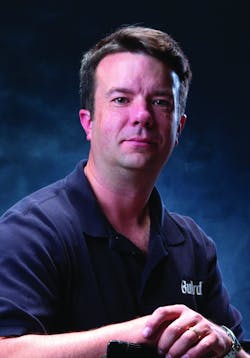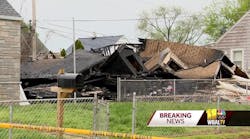I can remember, as a young firefighter, feeling rather proud of the fact that I had developed a certain prowess for driving one of our old, stick-shift engines. Even though it had to be double-clutched and required finesse to get it into third gear, I felt I had mastered it. One night, as I was advising another firefighter about how to do it “right,” one of the older firefighters spoke up and bet me that he could drive the truck out of the bay, circle the station and back it into the bay without ever touching the clutch. Of course, in my opinion, that was impossible.
Never mind the double-clutching issue; he was going to have to transition from drive to reverse and that would surely require a clutch. I took the bet. I watched him release the brake and start the vehicle in gear. It took two starts (the first one to get it rolling), but he managed to not use the clutch. He drove around the station, shifting gears without the clutch, to my utter amazement. We approached the front of the station, where he would have to change from drive to reverse, and I knew I had him. As he circled in front of the bay and pointed the truck away from the station, he slipped it out of gear and let the engine roll across the street in front of our station.
As we approached the curb on the far side of the street, he ever so gently feathered the brakes so the engine’s front wheels struck the curb just hard enough to stop the forward momentum of the vehicle – and rebound it backwards. At this point, he simply slipped the stick into reverse and backed it into the station.
I washed his car every shift for a month, but learned a valuable lesson: no matter how much you know; there is always more to know.
I can remember one of the first thermal imaging classes I taught. It was at an average-size, combination department that had recently purchased its first three thermal imagers. As the firefighters began to file in, I could not help but notice a less-than-enthusiastic demeanor. Eventually, they all found places to sit and we got underway. For the first 15 minutes, the group was respectful, but clearly not engaged. In the next 30 minutes or so, the group periodically engaged, but by the end of the first hour, they were all enthusiastically engaged as they thought about new uses for their thermal imagers.
As this was my first class, I was being mentored/monitored by a senior instructor. After the class, during his critique, I brought what had happened. His response was, “Oh, it’s always like that. These guys are trying to figure out how you are going to take four hours to explain what they understood in 10 minutes – that a thermal imager can see through smoke. Eventually, they figure out that you are here to talk about all of the other things it can do, and many have never really thought about it before.”
Since then, I have taught hundreds of fire departments and thousands of firefighters on four continents and more than 15 countries and guess what? Every class is the same. Every single time, firefighters stream into the room with the same forlorn look on their faces and I know what they are thinking. Every single time, they leave the training with minds reeling about all of the new applications. The scenario repeats itself over and over again.
Too Easy?
The problem is thermal imaging is extremely intuitive. Turn it on, see through smoke. That’s about as complicated as it gets. The average fire department receives a thermal imager and it takes the members about five seconds to figure out how to insert the battery and locate the power button. Five more seconds for the imager to power up and a perfectly discernible grayscale image appears. No more difficult than a flashlight to operate. Even a caveman can do it, as the Geico commercial says.
Training can, and many times does, stop there. You really don’t need any more guidance. If you got that far, you pretty much have it figured out – if all you want or expect to do with your thermal imager is see through smoke.
But what if you want more?
In its early days, thermal imaging was a new technology to the fire service and was met with distrust and lack of understanding. Over the years, manufacturers have made great strides in simplifying the utilization and operation while various fire service entities have worked just as hard to raise education and awareness. The result has been an explosion in the adoption of thermal imaging, but a decrease in the amount of requests for training.
Have we succeeded in breaking down barriers to adoption or have we over-sold and over-simplified? Has thermal imaging become so accepted and so easy to use that nobody feels the need for training? After all, what can that guy possibly talk about for four hours?
If seeing through smoke is all you want to do, you will find no criticism from me. The ability to see through smoke and the efficiencies and improvements in safety that ability brings completely justifies the purchase price, but there is so much more to know and do.
Conclusion
In the current economic conditions, many departments are running short-staffed. So many departments are dealing with budget crises that even mutual aid is difficult to rely on as neighboring departments are often struggling in very similar ways. I know a fire department that responded to a residential structure fire recently and all they could muster were two engines and six firefighters. This was a career department surrounded by other career departments, but there simply aren’t any extra resources any more. Please take every advantage you can to reinforce, address or improve firefighter safety.
Can you identify thermal layers inside a structure? How about selecting the best location for vertical ventilation and then monitoring its effectiveness? Can you identify pre-flashover conditions so you can get out of the way before the train comes down the tracks? Do you know how to identify parapet walls and other structural hazards? If not, seek training.
If you want a good place to start, go to the archives of this column on Firehouse.com. If that is not exciting, then Google it. If you want more than that, contact some folks for training. There are many companies conducting excellent training today – call one of them.
Seeing through smoke is just the tip of the iceberg.






